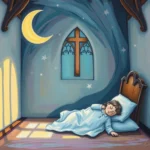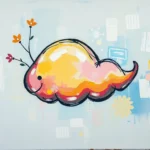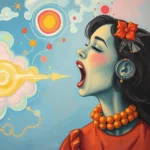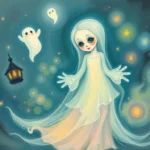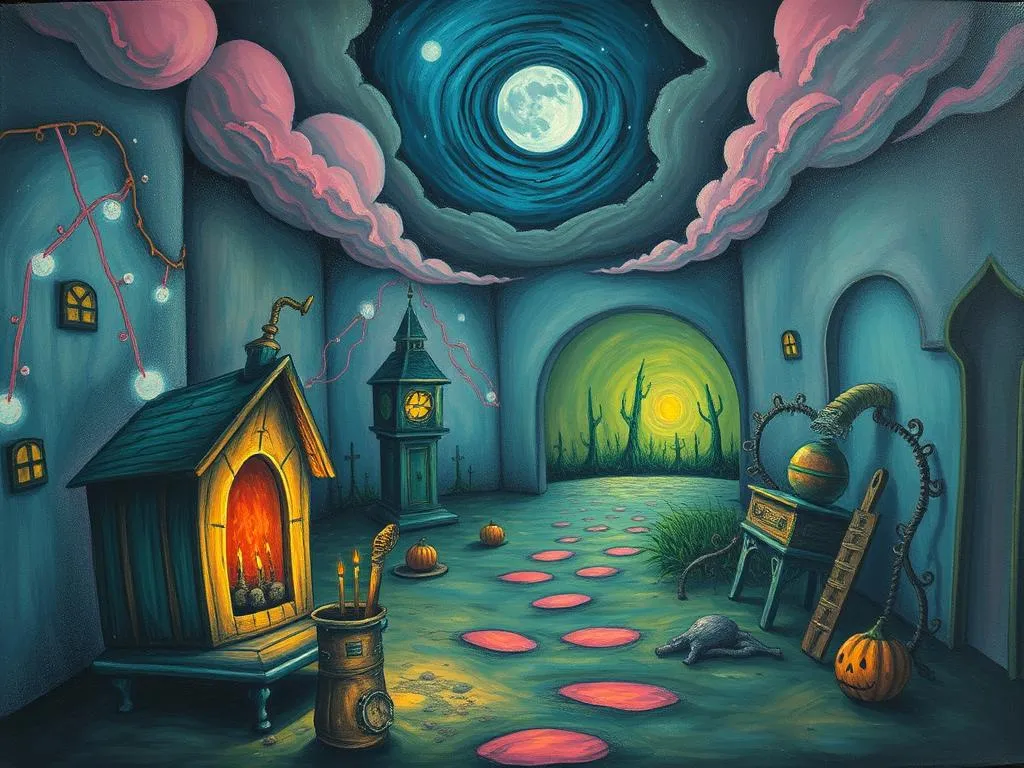
Introduction
Dreams have long been a source of intrigue and fascination, often serving as a reflection of our subconscious thoughts, fears, and emotions. Among the myriad of dream types, nightmares stand out due to their intense emotional impact and the unsettling imagery they often present. One particularly captivating category is the horror dimension dreams, where the dreamer may find themselves immersed in terrifying scenarios that provoke feelings of dread and anxiety. These nightmares not only awaken us in the stillness of the night but also compel us to contemplate their underlying meanings. Why do we experience such vivid, frightening dreams? What messages are hidden within these horror-filled narratives? In this article, we will explore the symbolism and meaning of horror dimension dreams, examine key scenarios and variations, and uncover the real-life connections and takeaways that can help us navigate our waking lives.
Symbolism and Meaning
The symbolism found in horror dimension dreams can be both profound and complex. Central to these nightmares are feelings of fear, vulnerability, and loss of control. Common symbols in horror dreams often include darkness, monsters, and chases. Each of these symbols carries its own significance and can manifest differently depending on the dreamer’s personal experiences and emotions.
Darkness, for instance, often represents the unknown or unacknowledged aspects of the self. It can symbolize fears that have not yet been confronted or secrets that remain hidden. When one dreams of being enveloped in darkness, it may reflect a struggle with anxiety or a sense of uncertainty in waking life. From another perspective, darkness can also symbolize a journey into the subconscious, suggesting the need for introspection and self-discovery.
Monsters, a common figure in horror dimension dreams, often embody our deepest fears. These creatures can take various forms, from grotesque beasts to familiar faces twisted into nightmarish versions of themselves. The appearance of a monster may signify a confrontation with personal demons, unresolved trauma, or overwhelming stress. Additionally, monsters can represent external threats or societal pressures that manifest in our dreams, indicating a need to confront these challenges head-on.
The motif of being chased is another prevalent theme in horror dimension dreams. This scenario often reflects feelings of anxiety or pressure in waking life. The pursuer may symbolize a looming responsibility, a repressed emotion, or even a fear of failure. When we dream of being chased, it may be an invitation to confront whatever it is we are trying to escape. By running away or hiding in the dream, we may be avoiding the very issues that require our attention.
Ultimately, horror dimension dreams serve as a mirror, reflecting our internal struggles and fears. They invite us to explore the unexplored recesses of our minds and confront the darker aspects of our psyche. Embracing these nightmares as opportunities for introspection can lead to profound personal growth and healing.
Key Scenarios and Variations
Horror dimension dreams can manifest in countless scenarios, each bearing unique interpretations. Understanding these variations is pivotal to uncovering the underlying messages they carry. One common scenario involves being trapped in a dark, labyrinthine space. This dream often symbolizes feelings of entrapment or confusion in real life. The winding paths may represent the complexities of a situation or the multitude of choices one faces, leaving the dreamer feeling lost and anxious.
Another scenario might involve haunted houses or abandoned buildings. These settings often symbolize the past, particularly unresolved issues or memories that continue to haunt us. Dreaming of exploring such a space may suggest a need to confront past traumas or emotions that have been suppressed. The eerie atmosphere of a haunted house serves as a reminder that the past cannot be ignored and must be addressed for healing to occur.
A variation of the haunted house scenario could involve ghosts or spirits from one’s past. These apparitions can represent unfinished business or lingering feelings associated with a past relationship or experience. The presence of a ghost in a dream might prompt the dreamer to reflect on their past and consider whether there are unresolved issues that need attention.
Another intriguing scenario is the apocalyptic setting, where the world is in chaos, often filled with destruction and despair. This type of dream can symbolize feelings of powerlessness or fear of change in waking life. The apocalypse often reflects societal fears, personal anxieties, or feelings of impending doom. In this context, the dream may serve as a call to action, urging the dreamer to address their anxieties and take control of their life.
While each of these scenarios offers varied interpretations, common threads weave through them, including the themes of fear, confrontation, and self-discovery. The specific details of the dream, such as the emotions felt during the experience or the actions taken by the dreamer, can also provide valuable insights into its meaning.
Real-Life Connections and Takeaways
Understanding the messages behind horror dimension nightmares is not just about interpreting symbols; it also involves connecting these dreams to our real-life situations. The emotions and themes present in these nightmares often reflect our waking struggles, anxieties, and challenges. By embracing this connection, we can gain valuable insights into our mental health and overall well-being.
One practical approach to addressing these dreams is through self-reflection. After experiencing a nightmare, take a moment to journal about the dream. Write down the symbols, emotions, and scenarios that stood out to you. Consider how these elements relate to your waking life. Are there situations causing you anxiety? Are there unresolved issues lingering from your past? Engaging in this reflective practice can help you gain clarity and provide a roadmap for addressing the concerns that surfaced in your nightmare.
Additionally, consider the role of stress management in mitigating nightmares. High levels of stress and anxiety can exacerbate the frequency and intensity of horror dimension dreams. Implementing relaxation techniques such as meditation, deep breathing exercises, or yoga can help create a sense of calm and reduce the likelihood of experiencing distressing dreams. Establishing a calming bedtime routine can also promote better sleep quality and lessen nighttime anxieties.
Another vital takeaway is the importance of emotional processing. Nightmares can serve as a catalyst for addressing repressed emotions. If a particular nightmare resonates deeply, it may be beneficial to seek professional support, such as therapy or counseling. Professional guidance can provide a safe space to explore these fears and emotions, ultimately leading to healing and personal growth.
Lastly, approaching these nightmares with a sense of curiosity rather than fear can shift our perspective. Instead of viewing them as mere disturbances in our sleep, we can embrace them as opportunities for self-exploration. Ask yourself what lessons these dreams might be trying to teach you. By reframing your mindset, you can turn fear into empowerment, using these experiences to foster resilience and understanding.
In conclusion, horror dimension nightmares, with their rich symbolism and emotional depth, offer powerful insights into our subconscious. By exploring their meanings, variations, and connections to our waking lives, we unlock the potential for profound personal transformation. As unsettling as they may be, these dreams can serve as guides, illuminating the darker corners of our psyche and encouraging us to confront our fears. Embrace the journey of understanding and reflection, and allow your nightmares to lead you toward healing and self-discovery. Dream on, and dare to unravel the hidden messages within your horror dimension nightmares.
